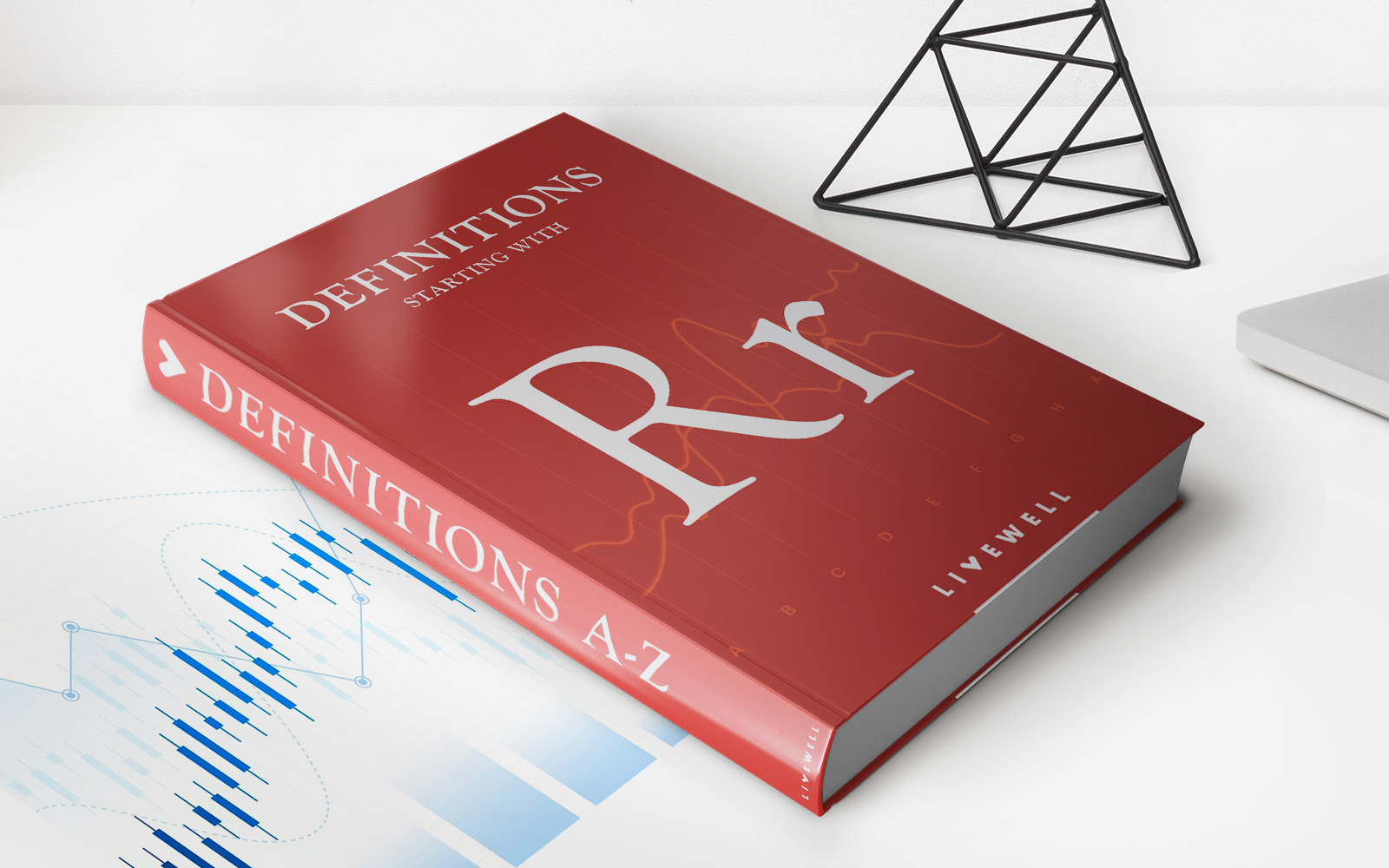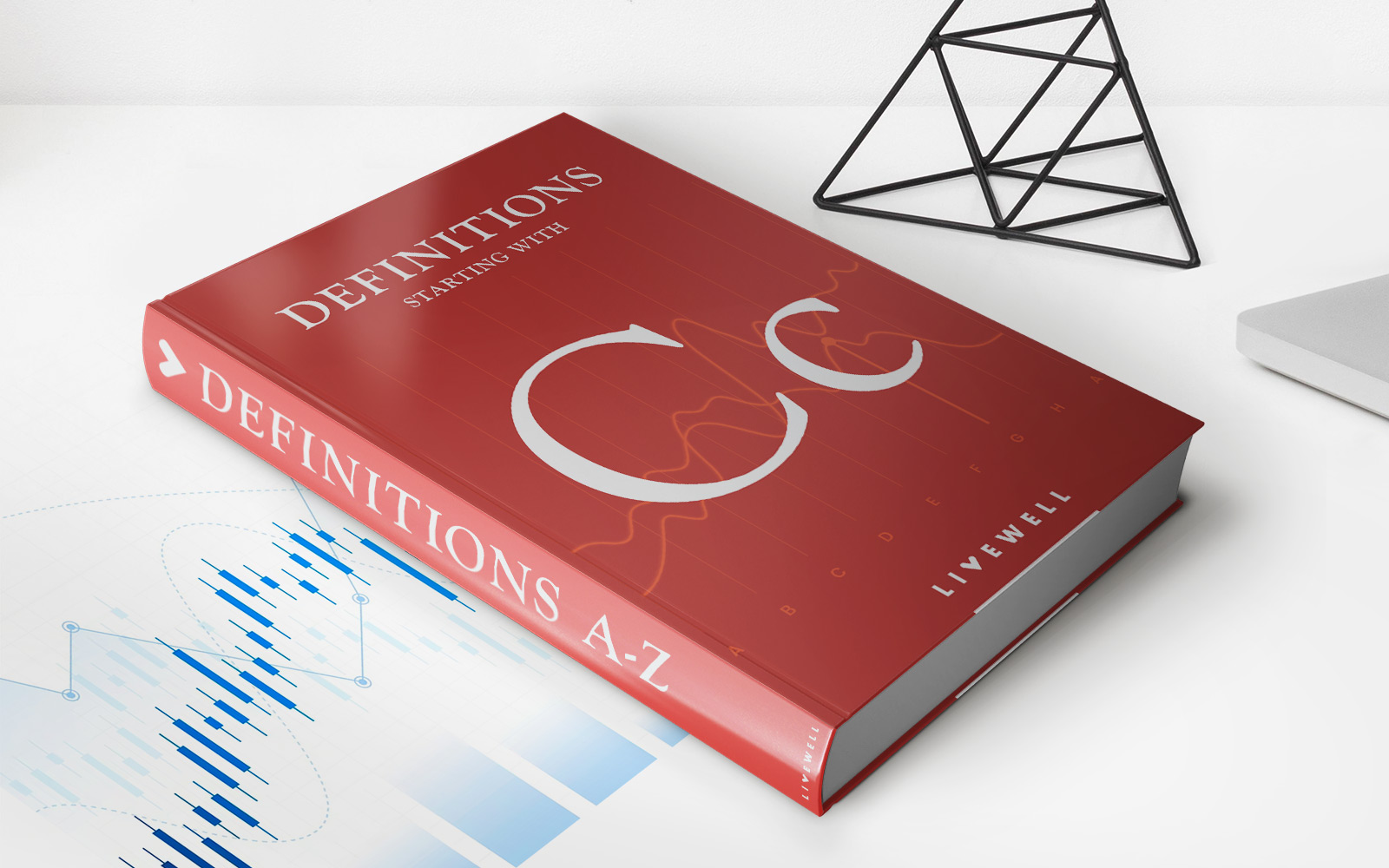Home>Finance>What Determines The Interest Rate On Many Private Student Loans


Finance
What Determines The Interest Rate On Many Private Student Loans
Published: January 20, 2024
Learn about the factors that influence interest rates on private student loans. Explore how finance plays a crucial role in determining the cost of borrowing for education.
(Many of the links in this article redirect to a specific reviewed product. Your purchase of these products through affiliate links helps to generate commission for LiveWell, at no extra cost. Learn more)
Table of Contents
Introduction
Private student loans are a popular option for individuals looking to fund their higher education expenses. Unlike federal student loans, which are issued by the government, private student loans are provided by banks, credit unions, and other financial institutions. One of the crucial factors that borrowers consider when selecting a private student loan is the interest rate.
The interest rate plays a significant role in determining the overall cost of the loan. It is the additional amount that borrowers are required to pay on top of the principal amount borrowed. The interest rate on private student loans can vary widely based on several factors, such as credit score, loan repayment term, market conditions, and the presence of a cosigner.
In this article, we will delve into the various factors that influence the interest rate on private student loans. By understanding these factors, borrowers can make informed decisions and potentially secure lower interest rates, which can result in significant savings over the life of the loan.
Understanding Private Student Loans
Private student loans are loans offered by private lenders, such as banks, credit unions, and online lenders, to help students finance their education expenses. These loans can be used to cover tuition fees, textbooks, accommodation, and other educational costs that may not be fully covered by scholarships, grants, or federal student loans.
Unlike federal student loans, private student loans are not backed by the government. This means that the terms and conditions of these loans can vary significantly from lender to lender. Private student loans typically have higher interest rates compared to federal loans, but they also offer more flexibility in terms of loan amounts and repayment options.
Private student loans are credit-based, which means that the borrower’s creditworthiness is taken into account during the loan application process. Lenders will assess factors such as credit score, income, and employment history to determine the borrower’s eligibility and the interest rate they will be offered.
It is important for borrowers to carefully consider their options and compare different lenders before selecting a private student loan. This involves understanding the terms and conditions, including the interest rate, repayment options, and any associated fees.
Additionally, borrowers should have a clear understanding of their own financial situation, including their income prospects after graduation, to ensure they will be able to comfortably repay the loan.
Private student loans can be a valuable tool for financing education, but borrowers should approach them with caution. It is important to weigh the benefits and drawbacks of private student loans against other funding options, such as scholarships, grants, and federal student loans.
By carefully considering their options and understanding the terms and conditions, borrowers can make informed decisions and select a private student loan that best fits their financial needs.
The Role of Credit Score
When applying for a private student loan, one of the most important factors that lenders consider is the borrower’s credit score. A credit score is a numerical representation of an individual’s creditworthiness and is based on their credit history. It provides lenders with an assessment of the borrower’s ability to repay debts.
Borrowers with higher credit scores are generally considered less risky by lenders, and as a result, they are more likely to be offered lower interest rates on their private student loans. On the other hand, borrowers with lower credit scores may face higher interest rates or even difficulty in obtaining a loan.
Lenders typically use the FICO credit scoring system, which ranges from 300 to 850, to evaluate a borrower’s creditworthiness. A higher credit score indicates a stronger credit profile and demonstrates responsible financial behavior, such as making timely payments, keeping credit utilization low, and maintaining a diverse credit history.
To improve their credit scores and increase their chances of securing a lower interest rate on private student loans, borrowers can take several steps:
- Make all loan payments on time: Consistently making on-time payments on existing loans and credit cards can help build a positive credit history, which can lead to a higher credit score.
- Keep credit utilization low: Maintaining a low credit utilization ratio, which is the amount of available credit that you are currently using, can show lenders that you are responsible with credit and can positively impact your credit score.
- Limit new credit applications: Applying for multiple loans or credit cards within a short period can negatively impact your credit score. It is important to be selective and only apply for credit when necessary.
- Dispute any errors on your credit report: Regularly reviewing your credit report for any inaccuracies and promptly disputing them with the credit reporting agency can help ensure that your credit score is based on accurate information.
- Consider a cosigner: If you have a limited credit history or a lower credit score, having a creditworthy cosigner on your private student loan application may improve your chances of approval and help you secure a lower interest rate.
By taking steps to improve their credit scores and maintain a positive credit history, borrowers can increase their chances of being offered lower interest rates on private student loans. This can make a significant difference in the overall cost of the loan and result in substantial savings over the repayment period.
Influence of Cosigner
For borrowers who have limited credit history or a lower credit score, having a cosigner on their private student loan can significantly impact the interest rate they are offered by lenders. A cosigner is someone who agrees to take responsibility for the loan if the borrower is unable to make the payments.
Having a cosigner with a strong credit history and good credit score can help mitigate the lender’s risk and increase the likelihood of loan approval. Since the cosigner is essentially guaranteeing the loan, lenders feel more confident in extending favorable terms, including lower interest rates.
When a cosigner is involved, the lender takes into account both the borrower’s and the cosigner’s credit scores and income when determining the interest rate on the loan. If the cosigner has a higher credit score and stable income, it can offset the borrower’s lower credit score or limited credit history.
By including a creditworthy cosigner, borrowers can potentially secure a lower interest rate, which can mean significant savings over the life of the loan. Additionally, a cosigner can help borrowers qualify for a loan that they may not have been able to obtain on their own.
However, it is important for borrowers to carefully consider the implications of having a cosigner. Both the borrower and the cosigner are equally responsible for repaying the loan, and any missed payments or default can negatively impact both parties’ credit histories.
Furthermore, before agreeing to be a cosigner, individuals should fully understand their obligations and consider the potential impact on their finances and credit if the borrower is unable to make payments.
If the borrower’s financial situation improves over time, they may have the option to release the cosigner from the loan. This typically requires the borrower to make a certain number of consecutive on-time payments and meet specific eligibility criteria set by the lender.
In summary, having a creditworthy cosigner can greatly influence the interest rate on a private student loan. Borrowers who include a cosigner with a strong credit history and stable income are more likely to receive favorable interest rates. However, both the borrower and the cosigner should carefully consider their responsibilities and the potential implications before entering into a cosigner agreement.
Loan Repayment Term
The loan repayment term is another factor that can impact the interest rate on private student loans. The loan repayment term refers to the length of time over which the borrower is expected to repay the loan in full. It is typically measured in years.
When it comes to private student loans, borrowers generally have the option to choose a repayment term that suits their financial circumstances. Common repayment terms for private student loans range from 5 to 20 years, although some lenders may offer shorter or longer terms.
Generally, loans with longer repayment terms will have lower monthly payments but higher overall interest costs. This is because the interest accrues over a longer period of time. On the other hand, loans with shorter repayment terms will typically have higher monthly payments but lower overall interest costs.
The interest rate on private student loans may vary depending on the chosen repayment term. Lenders may offer lower interest rates for loans with shorter repayment terms, as they pose less risk and result in lower overall interest costs for the borrower.
It is important for borrowers to carefully consider their financial situation and goals when choosing a loan repayment term. They should assess their income, expenses, and future earning potential to determine what monthly payment amount is affordable and realistic.
Opting for a shorter repayment term can help borrowers save on interest costs and pay off their loans faster. However, it may also result in higher monthly payments, which can put a strain on their budget. On the other hand, a longer repayment term can provide borrowers with more manageable monthly payments but may lead to higher overall interest costs over time.
Borrowers should consider their long-term financial plans and weigh the benefits and drawbacks of different repayment terms. They can use loan calculators or consult with their lender to understand how changing the repayment term affects the monthly payments and total interest paid.
Ultimately, finding the right balance between monthly payment affordability and overall interest costs is important when selecting a loan repayment term. By carefully considering their financial situation and personal goals, borrowers can choose a term that suits their needs and helps them effectively manage their student loan debt.
Market Conditions and Economic Factors
Market conditions and economic factors play a significant role in determining the interest rates on private student loans. These factors can influence the overall cost of borrowing for both lenders and borrowers.
One key factor that impacts interest rates is the prevailing interest rates set by the Federal Reserve. The Federal Reserve’s monetary policy decisions can affect the cost of borrowing for financial institutions, which in turn can impact the interest rates offered to borrowers.
During periods of economic growth and stability, the Federal Reserve may raise interest rates to control inflation. This can result in higher interest rates on private student loans. On the other hand, during times of economic downturn or recession, the Federal Reserve may lower interest rates to stimulate borrowing and economic activity. This can lead to lower interest rates on private student loans.
Market competition among lenders also plays a role in determining interest rates. When there are many lenders offering private student loans, they may use competitive pricing strategies to attract borrowers. This can lead to lower interest rates as lenders try to offer more favorable terms compared to their competitors.
Additionally, lenders may consider the risk associated with lending to students and factor it into the interest rate. Economic factors, such as unemployment rates and the overall state of the job market, can impact the perceived risk for lenders. Higher unemployment rates or a volatile job market may result in higher interest rates to offset the risk of loan default.
Borrowers should stay informed about current market conditions and economic factors that could affect interest rates. Following financial news and economic indicators can provide insights into the direction of interest rates and whether it is a favorable time to borrow.
While borrowers have limited control over market conditions and economic factors, they can still take steps to secure the best interest rates available. This includes maintaining a strong credit profile, comparing offers from multiple lenders, and exploring options for interest rate discounts or borrower benefits.
In summary, market conditions and economic factors have an impact on the interest rates offered on private student loans. Borrowers should stay informed about changing market conditions and take proactive steps to position themselves for the best interest rates available.
Fixed vs. Variable Interest Rates
When considering a private student loan, borrowers will often have the choice between fixed and variable interest rates. These two types of interest rates have distinct characteristics and can impact the cost of borrowing over time.
A fixed interest rate remains the same throughout the entire repayment term of the loan. This means that borrowers will have consistent monthly payments and can easily plan for their loan payments without worrying about unexpected rate fluctuations. Fixed interest rates provide borrowers with stability and predictability, making it easier to budget their finances.
On the other hand, a variable interest rate is subject to change over time, typically based on a specific benchmark such as the LIBOR or the Prime Rate. Variable interest rates may start lower than fixed rates, offering borrowers an initial cost advantage. However, they are susceptible to market fluctuations, meaning that the rate can increase or decrease over time. This introduces an element of uncertainty into the borrower’s monthly payments.
When deciding between fixed and variable interest rates, borrowers should consider their risk tolerance and their outlook on interest rate movements. Fixed rates are appealing for borrowers who prefer stability and want to have a consistent budget. They provide security against potential interest rate increases, but borrowers may miss out on potential savings if interest rates decrease.
Variable rates, on the other hand, can be advantageous for borrowers who believe that interest rates may decrease in the future. Initially, variable rates may be lower, leading to lower monthly payments for borrowers. However, there is the risk of rates increasing, which can result in higher monthly payments and potentially higher overall interest costs.
Borrowers should carefully assess their financial situation, consider their ability to manage varying monthly payments, and evaluate their outlook on interest rates before deciding between fixed and variable interest rates. It may be helpful to consult with financial advisors or loan specialists to gain a deeper understanding of the potential implications of each option.
The choice between fixed and variable interest rates ultimately depends on the individual borrower’s preference and risk tolerance. Both options have their pros and cons, and borrowers should carefully weigh these factors to make an informed decision that aligns with their financial goals and circumstances.
The Impact of Loan Fees
When considering private student loans, borrowers should also be aware of the impact of loan fees. Loan fees, sometimes referred to as origination fees or processing fees, are charges imposed by lenders at the time of loan disbursement. These fees are typically a percentage of the loan amount and are deducted from the loan proceeds.
The presence of loan fees can significantly affect the overall cost of borrowing. Borrowers should carefully consider the fees charged by various lenders and factor them into their decision-making process.
Loan fees can vary among lenders, so it’s essential for borrowers to compare the fee structures of different loan options before making a decision. Some lenders may charge higher upfront fees, while others may have lower fees or even waive them altogether. By comparing loan fees, borrowers can identify and choose lenders with more favorable fee structures.
In addition to comparing fees, borrowers should also consider how the fees will impact their loan repayment. Loan fees are typically deducted from the loan amount before funds are disbursed, meaning that borrowers will receive a smaller loan amount than they initially requested. This impacts the total amount of interest paid over the repayment term.
For example, if a borrower takes out a $20,000 private student loan with a 2% loan fee, the actual amount disbursed may only be $19,600. This means the borrower will be paying interest on the full $20,000 loan amount, despite receiving $400 less upfront.
Borrowers should consider whether paying the loan fee upfront is financially feasible or if it would be more advantageous to seek out loans with no or lower fees. It’s important to calculate the long-term implications of loan fees and assess whether the benefits of a particular loan outweigh the costs imposed by the fees.
Some lenders may offer the option to add the loan fee to the loan balance, allowing borrowers to avoid upfront payment. However, this will result in a higher loan amount and potentially more interest paid over the repayment term. Borrowers should carefully evaluate the trade-off between upfront fees and long-term costs when considering this option.
Overall, loan fees can have a significant impact on the cost of borrowing for private student loans. Borrowers should take the time to compare fee structures, understand how different fees are applied, and assess the long-term implications of the fees. By doing so, borrowers can make an informed decision that aligns with their financial goals and minimizes the overall cost of their private student loan.
Borrower Benefits and Discounts
When exploring private student loan options, borrowers should also consider the various benefits and discounts that lenders may offer. These benefits can help reduce the overall cost of borrowing and make the loan more affordable.
Here are some common borrower benefits and discounts that borrowers should look out for:
- Interest Rate Reductions: Some lenders offer interest rate reductions for borrowers who demonstrate certain behaviors, such as making automatic loan payments or enrolling in a loyalty program. These reductions can help lower the overall interest cost of the loan.
- Graduation Rewards: Certain lenders provide borrowers with a one-time reward for successfully completing their degree. This can come in the form of an interest rate reduction or a cash bonus, which can help offset the cost of borrowing.
- Principal Reduction: Lenders may offer borrowers a reduction in their loan principal after a certain number of on-time payments. This can help borrowers pay down their loans more quickly and reduce the overall interest paid over the life of the loan.
- Cosigner Release: Some lenders offer the option for borrowers to release their cosigner from the loan after a certain number of on-time payments and meeting specific eligibility criteria. This can be beneficial for borrowers as it removes the cosigner’s obligation and potentially allows the borrower to secure a lower interest rate.
- Repayment Assistance: In some cases, lenders may offer repayment assistance programs to borrowers facing financial hardships. These programs may include temporary interest-only payments, forbearance options, or alternative repayment plans to help borrowers manage their loan obligations during challenging times.
Borrowers should carefully review the terms and eligibility requirements of these benefits and discounts offered by different lenders. Understanding the available options and their potential impact can help borrowers choose a loan that best aligns with their financial goals and provides the most benefits.
It’s important to note that not all lenders offer the same borrower benefits or discounts. Therefore, borrowers should take the time to compare loan options and evaluate the potential savings and benefits associated with each lender’s offerings.
In addition to lender-specific benefits, borrowers should also explore any potential federal tax deductions or credits available for student loan interest payments. These deductions or credits can provide additional savings and should be considered when evaluating the affordability of a private student loan.
Ultimately, borrower benefits and discounts can significantly impact the overall cost of borrowing for private student loans. By carefully considering these offerings and factoring them into the decision-making process, borrowers can choose a loan that not only offers competitive interest rates but also provides additional benefits that can help reduce the financial burden of student loan repayment.
Conclusion
When it comes to private student loans, the interest rate is a crucial factor that borrowers must consider. Understanding the various factors that influence the interest rate can help borrowers make informed decisions and potentially save thousands of dollars over the life of their loans.
Credit score plays a significant role in determining the interest rate on private student loans. Maintaining a good credit score and taking steps to improve it can increase the likelihood of securing a lower interest rate. Additionally, having a creditworthy cosigner can also positively impact the interest rate by offsetting the borrower’s credit risk.
The loan repayment term is another factor to carefully consider. Shorter repayment terms may result in higher monthly payments but lower overall interest costs, while longer terms may provide more manageable payments but higher interest costs over time.
Market conditions and economic factors, such as the Federal Reserve’s monetary policy decisions and market competition, can also influence interest rates. It’s important for borrowers to stay informed about these factors and assess their impact on loan rates.
The choice between fixed and variable interest rates is another consideration. Fixed rates provide stability and predictability, while variable rates may offer initial cost advantages but come with the risk of future rate fluctuations.
In addition, borrowers should be mindful of loan fees, as they can significantly impact the overall cost of borrowing. Comparing different lenders’ fee structures and understanding their implications on the loan amount and interest paid is crucial.
Lastly, borrowers should explore lender-specific borrower benefits and discounts, which can help reduce the cost of borrowing. These may include interest rate reductions, principal reductions, graduation rewards, and repayment assistance programs.
In conclusion, borrowers should carefully evaluate and compare the various factors that determine the interest rate on private student loans. By doing so, borrowers can make informed decisions, secure favorable interest rates, and minimize the overall cost of borrowing. It is essential to find a balance between securing a competitive interest rate and considering other factors, such as repayment terms, loan fees, and borrower benefits. Taking the time to research and understand these factors will empower borrowers to make the best financial decisions for their education and future financial well-being.














